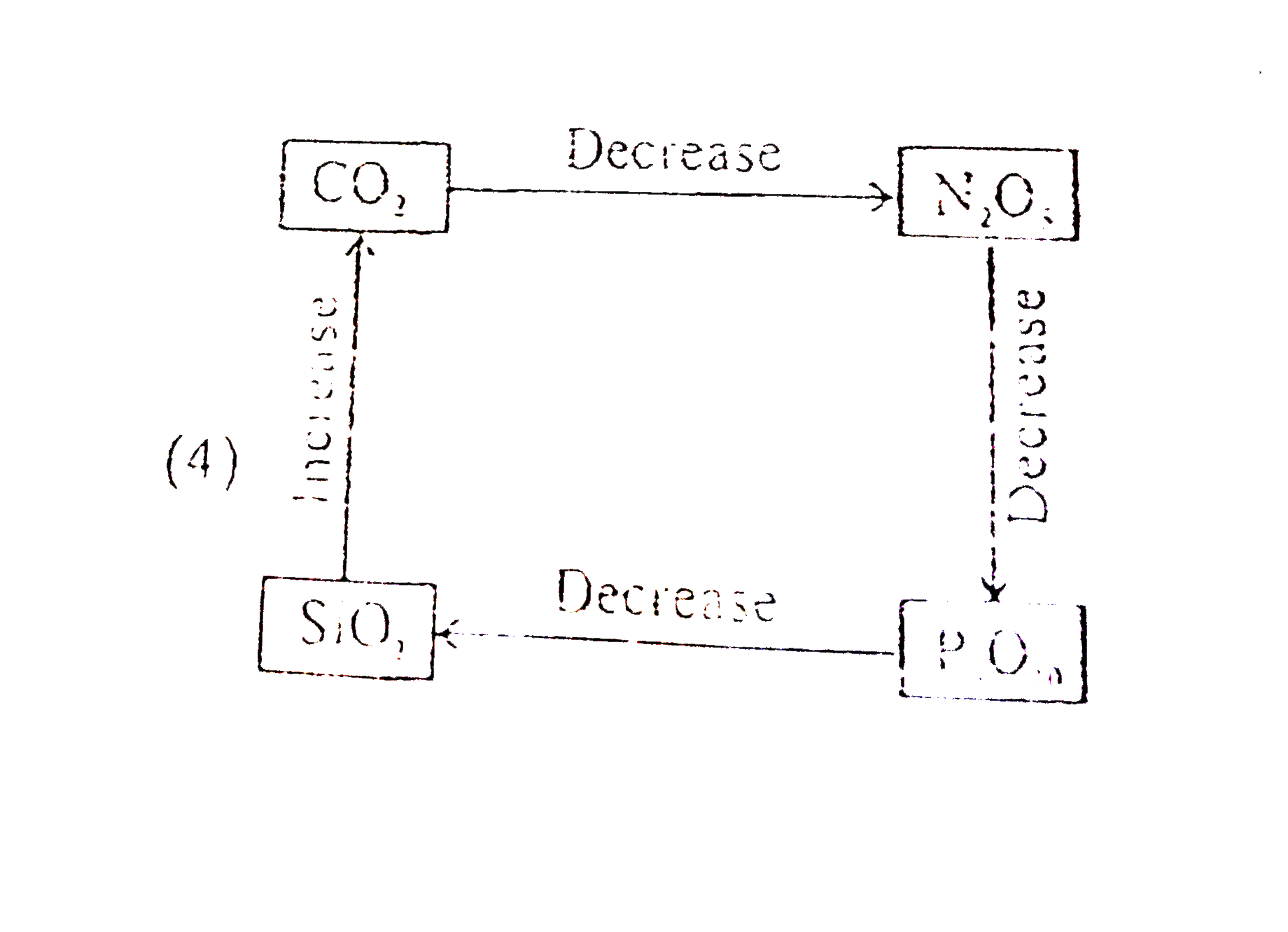Select correct diagram about the acidic strength of oxides :−




The correct Answer is:C
To determine the correct diagram regarding the acidic strength of the oxides CO2, N2O5, SiO2, and P4O10, we need to analyze the acidic character of these non-metal oxides based on their non-metallic character and size.
1. Identify the Oxides: The oxides given are CO2 (carbon dioxide), N2O5 (dinitrogen pentoxide), SiO2 (silicon dioxide), and P4O10 (tetraphosphorus decoxide).
2. Understand Acidic Strength: Non-metal oxides are generally acidic in nature. The acidic strength of these oxides increases with increasing non-metallic character and decreases with increasing size.
3. Analyze Each Oxide:
- CO2: Carbon is a non-metal and has a relatively small size. It exhibits acidic properties when dissolved in water, forming carbonic acid (H2CO3).
- N2O5: Nitrogen is more non-metallic than carbon and has a smaller size compared to phosphorus. N2O5 is a strong acid forming nitric acid (HNO3) in water.
- SiO2: Silicon is less non-metallic than nitrogen and is larger in size than carbon. SiO2 is amphoteric but can show some acidic behavior.
- P4O10: Phosphorus is larger than silicon and has a lower non-metallic character compared to nitrogen. P4O10 is also acidic, forming phosphoric acid (H3PO4) in water.
4. Rank the Acidity:
- From the analysis, we can rank the acidic strengths as follows:
- N2O5 > CO2 > SiO2 > P4O10
- This indicates that as we move from N2O5 to P4O10, the acidic strength decreases.
5. Select the Correct Diagram: Based on the ranking, the correct diagram should show an increase in acidic strength from CO2 to N2O5, followed by a decrease from N2O5 to P4O10, and then SiO2 being less acidic than CO2.
Conclusion:
The correct option is Option A, which correctly represents the trend in acidic strength: CO2 < N2O5 > P4O10 > SiO2.
- CO2: Carbon is a non-metal and has a relatively small size. It exhibits acidic properties when dissolved in water, forming carbonic acid (H2CO3).
- N2O5: Nitrogen is more non-metallic than carbon and has a smaller size compared to phosphorus. N2O5 is a strong acid forming nitric acid (HNO3) in water.
- SiO2: Silicon is less non-metallic than nitrogen and is larger in size than carbon. SiO2 is amphoteric but can show some acidic behavior.
- P4O10: Phosphorus is larger than silicon and has a lower non-metallic character compared to nitrogen. P4O10 is also acidic, forming phosphoric acid (H3PO4) in water.
- From the analysis, we can rank the acidic strengths as follows:
- N2O5 > CO2 > SiO2 > P4O10
- This indicates that as we move from N2O5 to P4O10, the acidic strength decreases.
The correct option is Option A, which correctly represents the trend in acidic strength: CO2 < N2O5 > P4O10 > SiO2.
Similar Questions
Knowledge Check
The correct order of acidic strength is
AK2O>CaO>MgOBCO2>N2O5>SO3CNa2O>MgO>Al2O3DCl2O7>SO2>P4O10
The correct order of Lewis acidic strength of boron trihalides :
View SolutionThe correct order of Lewis acidic strength of boron trihalides :
View SolutionThe correct order of acidic strength is
View SolutionSelect correct regarding acidic strength of given compounds: (1) o-methylbenzoic acid (2) m-methylbenzoic acid (3). P-methylbenzoic acid (4) benzoic acid.
View SolutionThe correct order of decreasing acidic strength of oxyacids of group 15 elements is
View SolutionSelect the correct statement about the RNAi method.
View SolutionThe correct order of increasing acidic strength is
View Solution

